This article was most recently updated on December 19, 2023.
What is the difference between a hard landing and soft landing?
When the Federal Reserve is concerned about inflation, it raises interest rates to slow the pace of economic growth. If the Fed raises interest rates a lot, it may cause a recession – known as a hard landing. However, if the Fed can raise interest rates just enough to slow the economy and reduce inflation without causing a recession, it has achieved what is known as a soft landing. But there is no official definition of a soft landing. The National Bureau of Economic Research (NBER), often considered by economists as the quasi-official arbiter of dating recessions, does not define hard or soft landings. Many economists consider a mild recession with a small increase in the unemployment rate as soft – what Fed Chair Jay Powell once described as a “softish” landing.
Soft landings are the equivalent of “Goldilocks’ porridge” for central bankers: following a tightening, the economy is just right – neither too hot (inflationary) nor too cold (in a recession).
What’s an example of a hard landing?
Inflation was high coming out of the 1960s. Further easy monetary policy during the 1972 presidential campaign and the oil price hikes engineered by the OPEC cartel in 1973 pushed inflation up to double digits in 1974. For the remainder of the 1970s, policymakers struggled to tame inflation.
In 1979, President Jimmy Carter chose Paul Volcker to succeed William Miller as chairman of the Fed. Volcker was determined to bring down inflation down – then running at an 11% annual rate – and restore price stability. From July 1980 until January 1981, the Volcker Fed raised the federal funds rate, the Fed’s key short-term rate, to over 19%. That led to a deep 16-month recession from July 1981 to November 1982, in which unemployment peaked at 10.8% – a hard landing. Volcker successfully brought inflation down to around 3% by mid-1983, setting the stage for several decades of good growth with only minor interruptions. The lessons of the episode according to Volcker were clear: It is critical to deal with inflation early before it picks up momentum and becomes embedded in people’s expectations about the future.
What is an example of a soft landing?
The classic example of a soft landing is the monetary tightening conducted under Alan Greenspan in the mid-1990s. In early 1994, the economy was approaching its third year of recovery following the 1990-91 recession. By February 1994, the unemployment rate was falling rapidly, down from 7.8% to 6.6%. CPI inflation sat at 2.8%, and the federal funds rate sat at around 3%. With the economy growing and unemployment shrinking rapidly, the Fed was concerned about a potential pick-up of inflation and decided to raise rates preemptively. During 1994, the Fed raised rates seven times, doubling the federal funds rate from 3% to 6%. It then cut its key interest rate, the federal funds rate, three times in 1995 when it saw the economy softening more than required to keep inflation from rising.
The results were nothing short of spectacular. Alan Blinder, former vice chairman of the Federal Reserve, noted that this was the “perfect soft landing that helped make Alan Greenspan a central banking legend.” Economic performance for the remainder of the decade was strong: Inflation was low and steady, unemployment continued to trend downwards, and real GDP growth averaged above 3 percent per year. Greenspan wrote in his memoirs that “the soft landing of 1995 was one of the Fed’s proudest accomplishments during my tenure.”
How common are soft landings?
That depends entirely on how one defines a “soft landing,” a term for which there is no consensus definition. Princeton economist Alan Blinder, a former Fed vice chair, says that if GDP declines by less than 1%, or the NBER doesn’t declare a recession after at least a year of a Fed rate-hiking cycle, he considers that a soft landing. Examining 11 periods of Fed rate increases from 1965 to 2019, he counts five soft or softish landings, as shown in the table below.
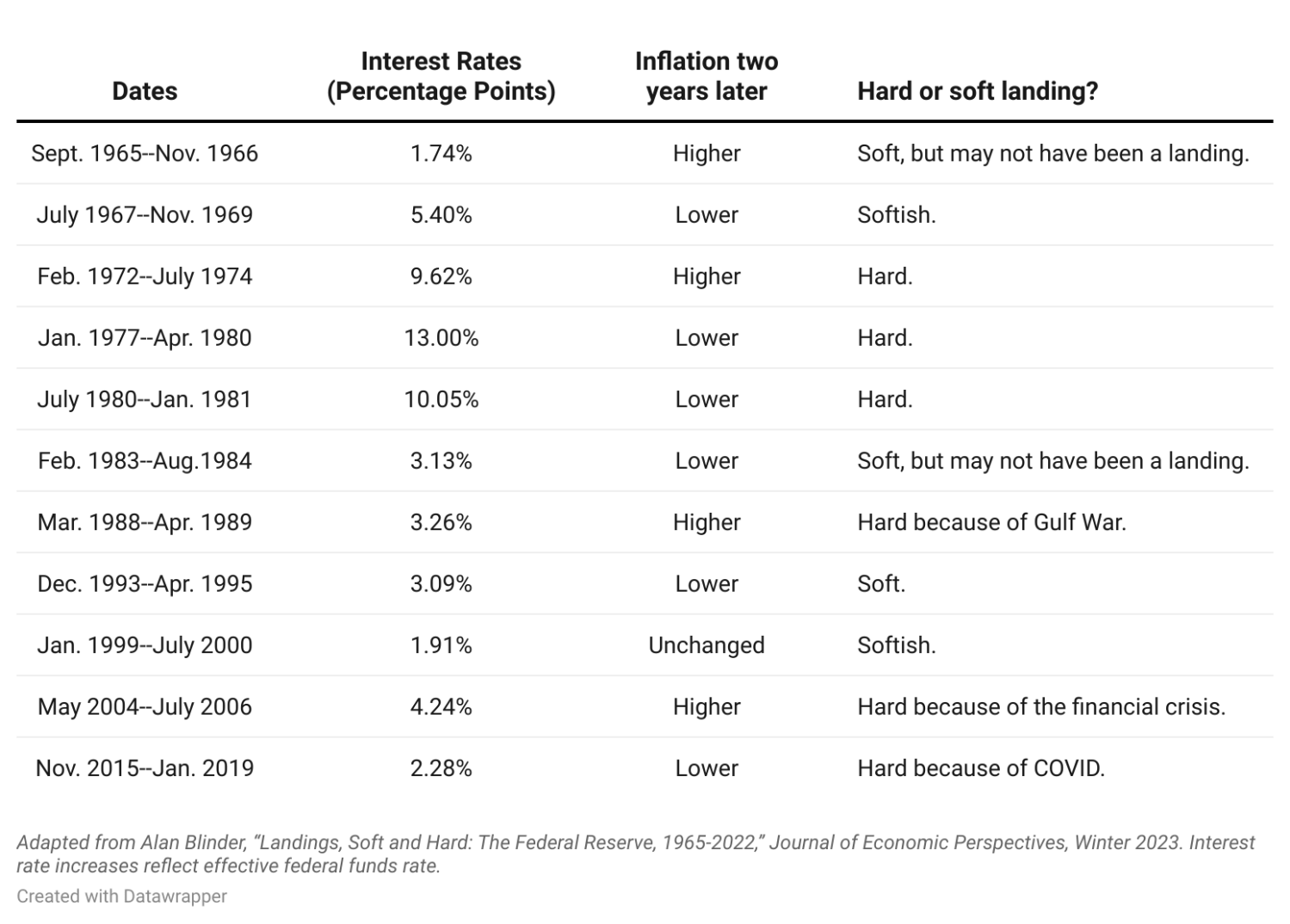
Are we going to enjoy a soft landing this time?
Maybe.
The Federal Reserve has been coping with the worst inflation episode since the early 1980s – very different circumstances than it was facing in 1994. Following an easing of the lockdowns during the COVID-19 pandemic in 2020, disruptions to supply chains, and substantial fiscal and monetary stimulus, inflation rose to a 10% annual pace in the first quarter of 2021. The Fed responded, belatedly, raising interest rates sharply by more than 5 percentage points beginning in March 2022. Inflation has since come down – the headline CPI (Consumer Price Index, which includes volatile food and energy prices) rose at a 3.9% annual rate from June to August 2023 – yet unemployment remains low by historical standards, 3.8% in August 2023, and GDP has continued to rise at a solid pace.
In 2022, predictions of a recession in 2023 were widespread, but more recently they have been receding. Larry Summers, the former Treasury secretary and a prominent forecaster of a hard landing, said in April 2022, “If you look at history, there has never been a moment when inflation was above 4% and unemployment was below 5% when we did not have a recession within the next two years.” But after the September 2023 employment report, which showed a slowdown in hiring and several encouraging months of inflation numbers, he said, “I still think the road to a soft landing is a very difficult one, but this was a step down that road.” On the other hand, Paul Krugman, in July 2023, and Treasury Secretary Janet Yellen, in September, argued that, though uncertain, there are many reasons to be optimistic, because inflation had decreased in 2023 without a substantial increase in unemployment. “To me a soft landing is the economy continues to grow, the labor market remains strong and inflation comes down. And I believe that’s the path we’re on,” Yellen said in mid-December at a Wall Street Journal conference.
Though cautious, economists are increasingly optimistic about the prospects of a soft landing. The nearly 70 private-sector economists surveyed by The Wall Street Journal in October 2023 lowered the probability of a recession within the next year to 48%, down from 54% on average in July and the first time they put the probability below 50% since mid-2022. Among economists surveyed by the National Association for Business Economics in August 2023, 69% said they were very confident, confident, or somewhat confident that the Fed will be able to achieve a soft landing; five months earlier, only 30% were. In a NABE survey of 40 professional forecasters in November 2023, more than three-quarters put the odds of a recession in the ensuing 12 months below 50%.
Given how hard it is to predict – let alone pull off – a soft landing, Powell, in his speech at the 2023 Jackson Hole conference, called for “agile” policymaking. And Christine Lagarde, president of the European Central Bank, urged clarity, flexibility, and humility in policy. All three are likely to be needed if central bankers are to add another soft landing to the Blinder list.
-
Acknowledgements and disclosures
The Brookings Institution is financed through the support of a diverse array of foundations, corporations, governments, individuals, as well as an endowment. A list of donors can be found in our annual reports published online here. The findings, interpretations, and conclusions in this report are solely those of its author(s) and are not influenced by any donation.


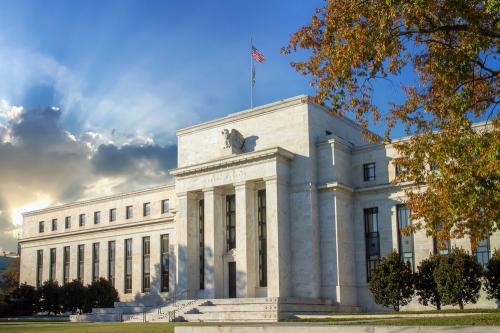
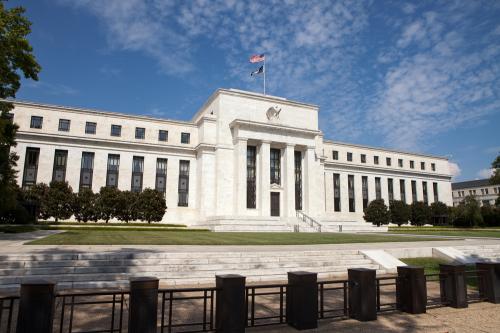
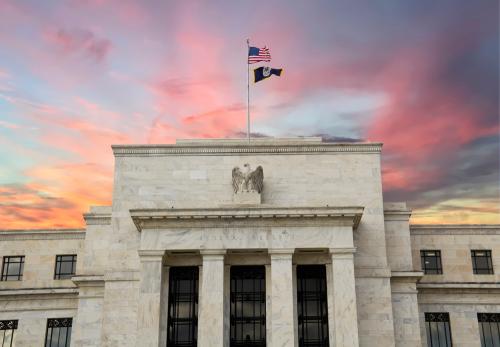
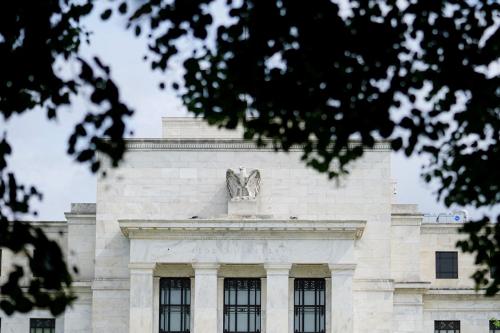
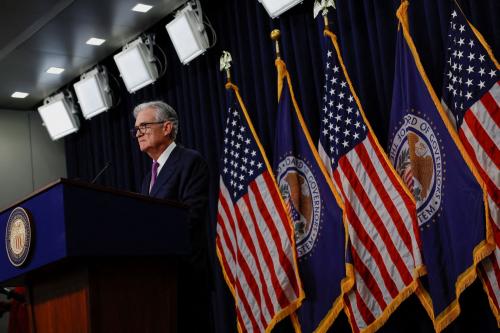

Commentary
What is a soft landing?
September 14, 2023